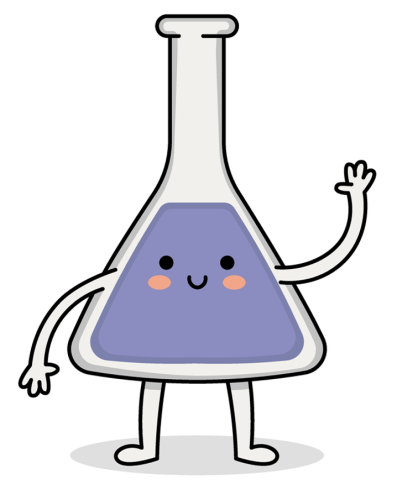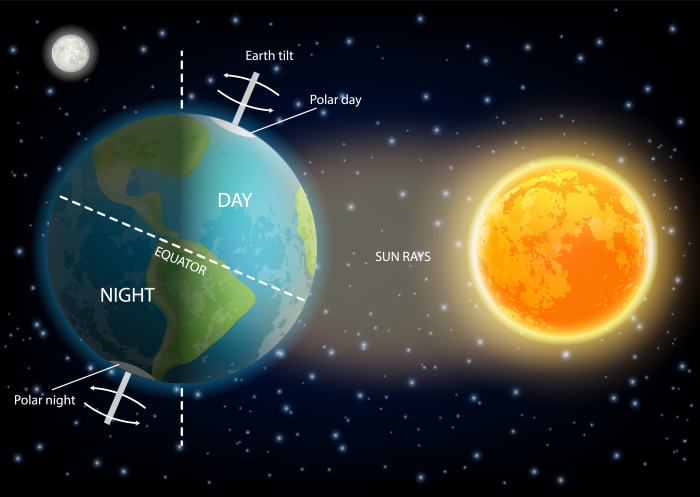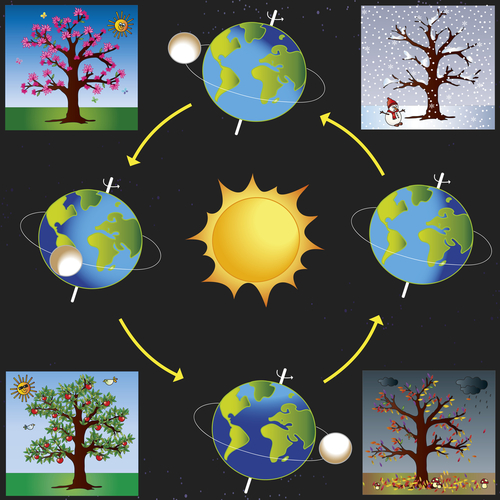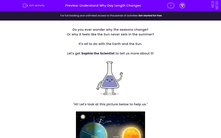Do you ever wonder why the seasons change?
Or why it feels like the Sun never sets in the summer?
It's all to do with the Earth and the Sun.
Let's get Sophia the Scientist to tell us more about it!

"Hi! Let's look at this picture below to help us."

"Here, we can see the Earth is tilted towards the Sun.
The Sun and the Earth are both always spinning and the Earth orbits around the Sun. This means it moves in a big circle all the way around the Sun.
One full orbit around the Sun is what makes up our years, our seasons and affects our weather!
So in the summer, our part of the Earth is leaning towards the Sun. This means we get more daylight each day and warmer weather!"

In the winter, our part of Earth is leaning away from the Sun. This means that we get less daylight, so our days seems shorter and the weather is colder.
Because the Earth is always spinning, we always get daylight. One full spin of the Earth is a day - 24 hours.
But as we move around the Sun, the amount of daylight we get changes, depending on where we are.
"Let's look at this picture to help us see this."

Here, we can see that the Earth orbits around the Sun and spins at the same time.
There is more daylight in spring, and summer has the most daylight.
The longest day is called the Summer Solstice and there can be up to 17 hours of sunlight that day!
Then, as the Earth keeps orbiting the Sun, there is less daylight. The seasons change to autumn and winter, which has the shortest day called the Winter Solstice.
On this day there are fewer than 8 hours of sunlight - it is dark in the mornings and early in the afternoon during winter.
Phew! Did you guys manage to keep up?

Let's use some of this knowledge to help us learn more about how the hours of daylight change!








